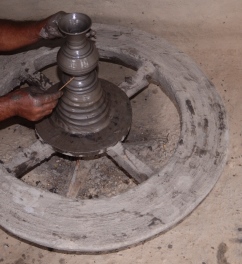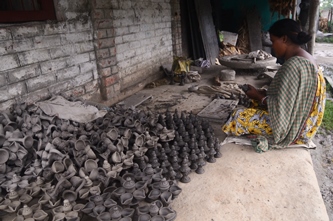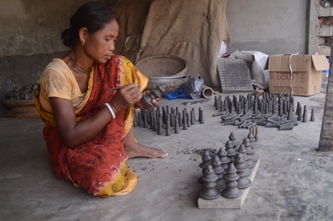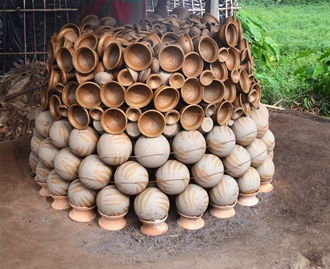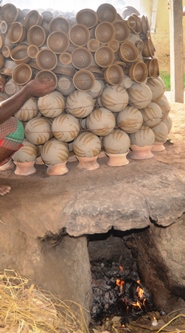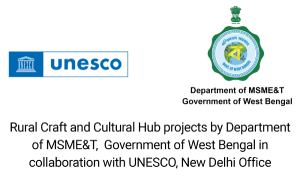Process
The process starts with preparation of the materials starts with removing silt, sand and pebbles from the clay to make it suitable for the wheel work. This is done by breaking the lump of clay and making it into more finer and powdered grains and also refining it by removing the sand particles either by hand or by using sieve. After the clay is refined, the next step is to add other raw materials such as fine river sand and water.
Mixing is done by hands if the quantity of the clay is less, but if the quantity is more then potters prefer using their legs. The mixing of clay is followed by the wheel work, which is mainly done to make the basic shapes such as cone, cylinder etc., which act as the main component of the items to be made.
The drying of the product made on the wheel is an important step. The drying is mainly natural drying and it takes around a day or two for the product to become ready for the next step. After the wheeled products are dried, they are assembled together by hand to give a basic structure and shape. Motifs are next designed on the semi dried product by hand and bamboo tools called Chhiyari.
After a little drying in the sun, holes are made on appropriate parts of the body. This is done before full drying, otherwise the inner and the outer surface of the body will not be equally dry. Cracks may develop in the body for unequal drying of the inner and the outer portions. The products are dried naturally. Two coats of colour made from bonop are next applied. This is a unique colouring process since clay is used to colour the products.
Finally the products are put in kiln at 700-750 degree centigrade for 4-5 hours .
